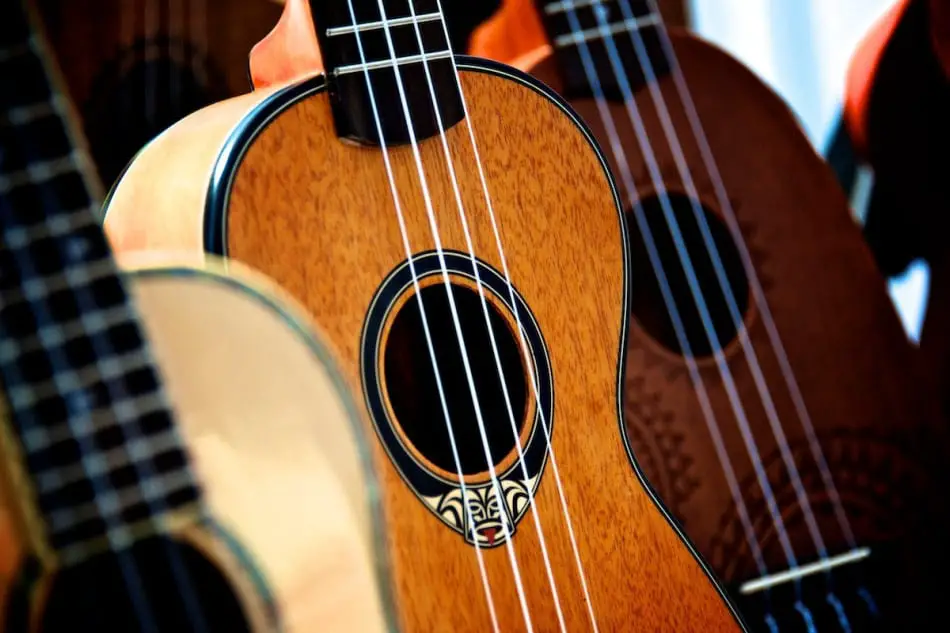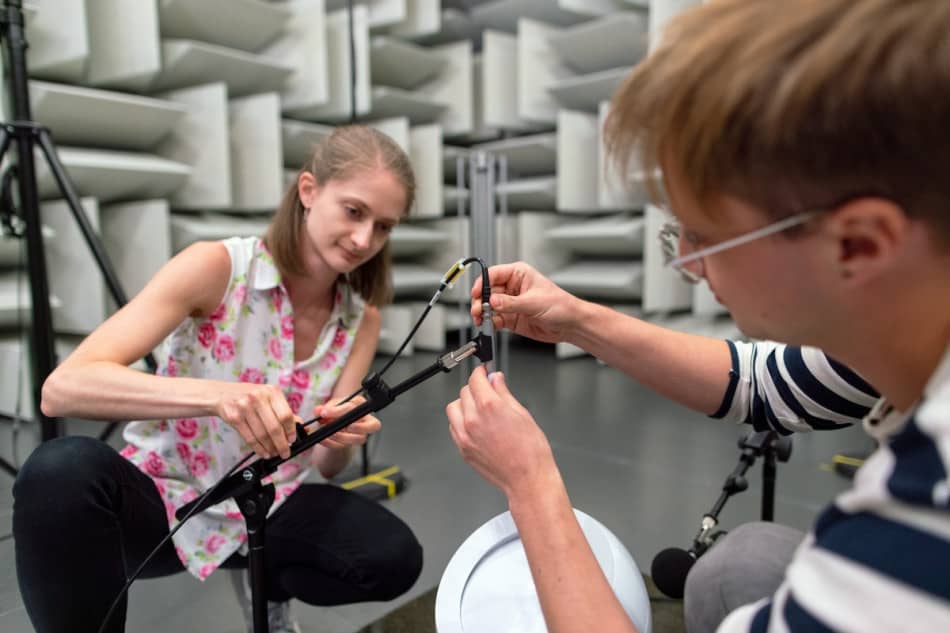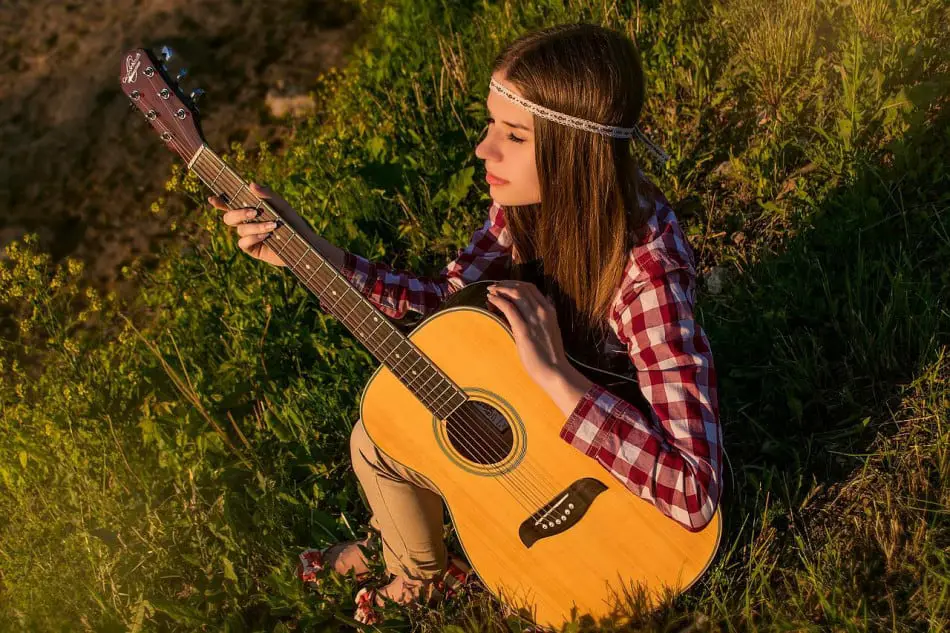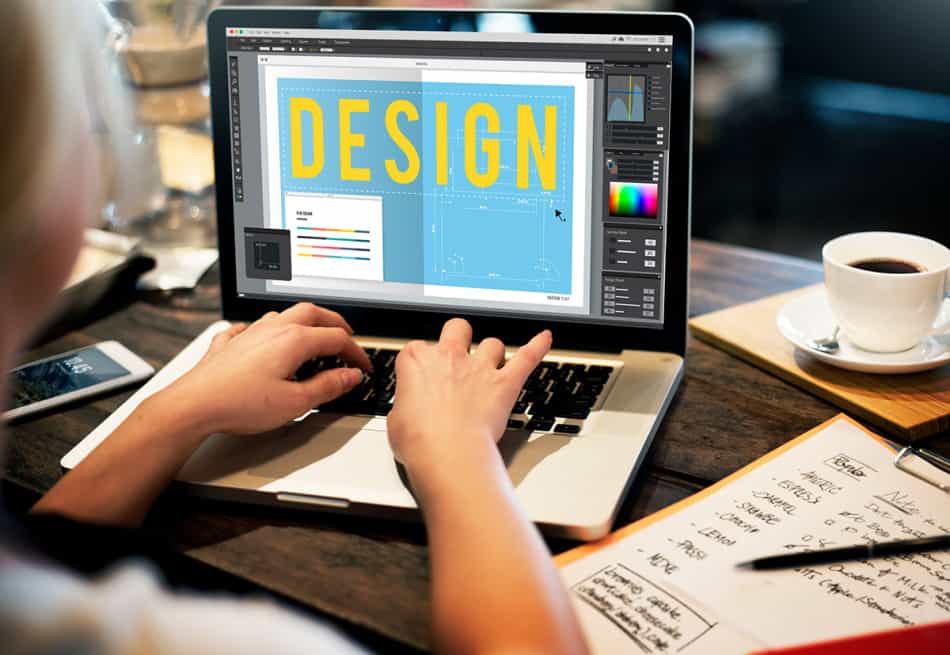Everyone has considered learning an instrument at some point in their lives, whether it be guitar when you were a teenager or piano as a stay-at-home mum.
However, you may wonder – what instruments can you teach yourself? Read on to learn!
The five musical instruments you can fully teach yourself are the ukulele, harmonica, piano, drums, and guitar. The easiest to learn is the ukelele, as it does not require any prior musical experience.
Teaching yourself musical instruments is one of the most rewarding things you can do for yourself. If you want to learn an instrument, there are many ways to go about it.
This article outlines the easiest instruments you can teach yourself as well as tips on how to learn these instruments on your own.
5 Easiest Instruments To Teach Yourself
1. Ukulele

This is an excellent option if you’re looking for an instrument that’s easy to learn on your own. You don’t need any prior musical experience because it’s straightforward to learn.
The ukulele is a guitar-like instrument invented by Portuguese immigrants in Hawaii in the 1800s.
You can play this instrument with just two fingers and It’s small enough to fit into your backpack or purse, making it easy to take wherever you go.
It has four strings tuned in G, D, A, and E, which you can easily remember because they match up with the pitches of other musical instruments.
Ukulele also has two different types of tuning: concert pitch (standard tuning) and tenor pitch (lowest note is G).
As a beginner, you can learn to play ukulele all by yourself by watching the 10 lessons by Andy Guitar, you can click on this link to find the first lesson.
-> Read Also How Easy Is It To Teach Yourself The Ukulele?
2. Harmonica
The harmonica is one of the first and easiest instruments you can master on your own as a child because it is a free-reed instrument that produces a pure tone when you play it by putting your mouth anywhere on it.
It’s made from two metal plates (or reeds) pressed together and held between your lips.
When you blow air into one reed, it vibrates, causing air to flow through holes in the other reed and creating sound waves which vibrate across the mouthpiece.
This guide by Mitch Grainger contains useful steps that can assist you in teaching yourself how to play the instrument.
The best part about learning how to play the harmonica is that there are no limits to what type of music you can play on it.
3. Piano

The piano is not a difficult instrument to learn, but it requires dedicated hours of practice. This can be tasking so you have to manage your other commitments in order for you to be able to practice every day.
You can also start by playing easy tunes or simple chords on the piano that require a few fingers.
It can be helpful to mirror some videos like piano lesson for beginners and 7 days to learning piano on YouTube.
Playing simple nursery songs can also help your fingers get used to the instrument then you can bump it up to more advanced chords or tunes.
Labeling the piano (as seen in this how to label keys on a piano/keyboard video) can also help you to remember the placement of the notes.
If you want to learn how to play piano by yourself, we recommend that you buy and read up on books about learning how to play piano online like Piano For Dummies.
You could also try using an online service like Musopen or Musescore, where you can immediately download free sheet music from various musicians on your computer.
4. Drum Set
Drums are one of the easiest instruments you can learn on your own, but it requires effort and consistency to get good and professional at playing them.
If you’re familiar with listening to the drum, when learning as a beginner, you’ll be familiar with the sounds created by different parts of the drum set.
The best way to get started with drums is by getting a basic set and practicing with them for about an hour regularly. This the 3 best beginner drum exercise video can be of great help in learning the basics.
The difficulty you might initially have is mostly in learning to read basic rhythms—the idea of a “feel” for what’s coming next in the song.
You can learn and practice several drum rhythm videos like how to play drums on YouTube.
You can get professionals to teach you this skill either physically or virtually. Also, you can get them when you want to try something new or more advanced like learning how to play an electronic drum kit.
5. Guitar

The best way to learn how to play guitar is by getting started with an acoustic guitar. It’s easy to find good deals on eBay and Amazon.
You can learn from several instructional videos, for instance, Acoustic Guitar instruction for beginners and how to learn acoustic guitar can help you to learn the basics.
You can use a classical or electric guitar if you want something more advanced than an acoustic guitar.
Both have pros and cons—an electric guitar can be louder and more powerful, while a classical guitar has more options for customization—but they’re both great choices if you’re looking for something new or different.
Acoustic vs. Classical vs. Electric Guitars
The table below compares the acoustic, classical, and electric guitars:
| Guitar | Acoustic | Classical | Electric |
| Strings | Steel | Nylon | Steel |
| Music | Contemporary, blues, country, folk, and jazz | Latin-inspired or classical music | Jazz, blues, funk, metal, and rock |
| Body | Hollow | Hollow | Solid |
Source: Sloan School of Music
Tips For Learning To Play Musical Instruments On Your Own
You can use these tips to guide you in learning musical instruments on your own.
Tip One: Learn Your Fundamentals
Just like learning any new skill, there are several ways you can learn how to play an instrument.
Start by learning the basic chords and rhythms of whichever instrument you’re teaching yourself.
Then progress from that phase to simple and complex melodies as your understanding grows over time.
The most important thing is for you to take it at your pace but be steady and disciplined.
-> Read Also What Is An Autodidact?
Tip Two: Watch Or Listen To Other Instrumentalists
If you wish to learn to play a new instrument or get better at playing one, it’s essential to know what professionals do.
Find out how professional instrumentalists developed themselves, if possible have talking sessions with them and ask important questions.
Furthermore, you can have some of them as mentors and study them keenly.
Tip Three: Make Use Of The Internet
Asides from you watching tutorials or videos of people playing instruments on YouTube like the several video links in this article, many sites like FutureLearn offer free lessons on all types of instruments, as well as tips on how to get started with them.
Use these sites as a guide while learning how to play an instrument on your own. You can mirror yourself playing these instruments.
Furthermore, you can search for some books on Amazon, make purchases, and study them well. For instance:
- How to play Ukulele
- How to play the Harmonica
- Piano book for adult beginners
- How to read music for any instrument
- How to play drums in 14 days
- Guitar book for adult beginners
-> Learn more about the 7 best websites for self-learning
Tip Four: Get A Quality Instrument

Many people complain about having trouble finding the right instrument for themselves. Our advice is to get one that’s easy and convenient for you to play and that you like.
You’ll be spending a lot of time with your instrument, so choose something that fits your style and personality and also what sounds good.
Tip Five: Watch Yourself And Learn
You need to watch yourself play and see what you are doing wrong and what you are doing right. If you don’t know the correct name for something, ask someone who knows.
Don’t worry if it’s not perfect; people make mistakes when learning. You will get better with practice!
Tip Six: Practice! Practice! Practice!
With regular practice sessions, your skills get improved—this applies to whether you’re just learning how to play a new instrument or becoming a professional player.
Even though it’s important to be patient with learning how to play certain instruments like the piano or guitar, you have to practice every day to get good results.
As a beginner for instance, for the first few weeks or months, focus your learning and practice on the basics like the simple chords, tunes, rhythms or music.
The succeeding weeks, learn and practice the advanced part of the instrument.
Tip Seven: Remain Patient And Don’t Give Up
You may find that learning to play an instrument can be discouraging after many attempts, but it’s worth persevering because there are many benefits in the long run.
Some of them develop your very sophisticated motor abilities, reduce stress, improve your concentration level and boost your self-esteem.
The most important thing is to keep practicing, even if it’s just for thirty minutes a day.
Tip Eight: Experiment With Different Sounds And Styles

When you learn how to play an instrument, you don’t just memorize and play notes correctly; you also learn how to make those notes sound good in any situation.
Experiment with different styles and techniques until you find what works best for you, then practice well until it feels natural!
FAQs
1. Can I learn how to play an instrument?
Yes! This is something that many people should be able to do. Just make sure you’re in good physical shape before starting, and have plenty of time to practice.
2. What’s the hardest instrument to learn?
The violin is one of the most difficult instruments to learn, not only because it’s an instrument with a very steep learning curve but also because it requires a lot of time and dedication.
Violin lessons can take months or even years, and if you have no musical background at all, it could be highly challenging.
-> Learn More about Self-Learning vs. Classroom Learning: Which Is Better?
Final Thoughts
When it comes to choosing your instrument, it is important that you understand what type of music you want to play and you have a good understanding of the instruments used.
Start with the basics, and learn some scales and basic chords.
Use that time to develop good techniques, and then branch out into the genres of music you are interested in.
We hope this article has guided you on how to learn a new instrument by yourself.






